You are here
History of astronautics.
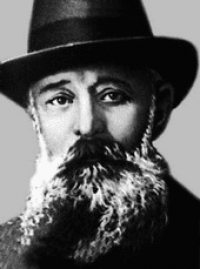
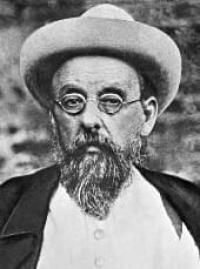
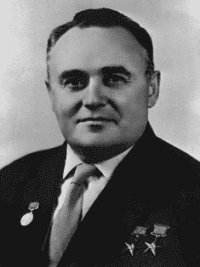
History of astronautics at Baikonur Cosmodrome.
“We live more the life of the Cosmos than the life of the Earth, since the Cosmos is infinitely more significant than the Earth”.
K.E. Tsiolkovsky.
Flights into space from Baikonur Cosmodrome.
The beginning of the space age is considered to be October 4, 1957, the date of launch of the world's first Soviet artificial Earth satellite. Thoughts and dreams about space flights, about direct visits by humans to other celestial bodies are already found in the works of ancient Greek thinkers.
At the beginning of our era, gunpowder was invented in China and the first rockets were created - rockets, used for signaling, festive fireworks and only partly in war (to scare enemy cavalry). The name of the first inventor of a jet aircraft, a prominent scientist and the first test pilot Wang Gu, who made the first attempt at a manned rocket flight that ended in disaster at the beginning of the XVIth century, is known.
Wang Gu's apparatus consisted of two box-shaped kites connected by a truss with a pilot's seat in the middle and 47 powder solid propellant rocket engines. Semi-legendary information has been preserved about “vimanas” - ancient Indian aircraft, the working fluid of which was mercury.
For almost 2,000 years, rocket designs and uses have remained virtually unchanged. The idea of a man flying into space (to the Moon) on a multi-stage rocket is found in the book of Cyrano de Bergerac (17th century); in the mid-19th century, the French science fiction writer A. Ayrault wrote about interplanetary rocket flights.
The emergence of new chemical materials and powerful explosives in the second half of the XIXth century favored the development of military rocket science, but only a few scientists dreamed of the great future of the rocket engine.
Lost in the archives of the security department were the papers of N. I. Kibalchich (1853 – 1881), an active figure in Narodnaya Volya, sentenced to death for the assassination attempt on Tsar Alexander P. Russia's first manned rocket project was developed in prison while awaiting execution.
In the 90s of the last century, the then unknown Kaluga teacher of physics and mathematics Konstantin Eduardovich Tsiolkovsky (1857 - 1935) and the now undeservedly forgotten physicist Prince I.V. Meshchersky (1859 - 1935) laid the foundations of a modern rocket technology and astronautics.
For the first time, K. E. Tsiolkovsky expressed the idea of using a rocket engine for interplanetary flights in 1883. In 1903, his book “Exploration of World Spaces by Reactive Instruments” was published, in which K.E. Tsiolkovsky was the first to deduce the laws of motion of a rocket with a changing mass in outer space and his famous “Tsiolkovsky formula”: showing that the speed of a rocket is directly proportional to the speed of the jet stream (specific thrust of the rocket engine), substantiated the possibility of using a rocket engine “for interplanetary communications”, determined efficiency of the rocket, studied the influence of air resistance on the movement of the rocket, etc.
Konstantin Eduardovich found a number of important engineering solutions for rocket designs, for the first time in the world gave the foundations of the theory of a liquid rocket engine, studied the elements of their design and various types of fuel, the problems of organizing interplanetary flights and the prospects for the development of astronautics.
In 1904, Professor I.V. Meshchersky published the basic equations of rocket dynamics. In 1921 F.A. Zandler (1887 - 1933), a major Soviet scientist and inventor, theoretically studied various issues of the design of a rocket engine, spacecraft and flights (his work formed the basis for Soviet and American “lunar” projects of the 60s), promoted and popularized the idea of space flight.
Another founder of world theoretical cosmonautics was A.I. Shargeya, who lived under the pseudonym Yu.V. Kondratyuk (1897 - 1942). Professor N.I. Tikhomirov (1860 - 1930) created the first domestic research and development laboratory for rocket technology in Moscow.
In 1927, it was relocated to Leningrad under the name GDL (Hydrodynamic Laboratory). In 1932, the GIRD (Jet Propulsion Research Group) was organized in Moscow under the leadership of S.P. Queen. The first launches of experimental rockets from liquid jet engines began in 1933.
The Jet Research Institute was created on the basis of the Hydrodynamic Laboratory. Abroad, work on the study of jet propulsion began: in 1907 in the USA by R. Goddard (1882 – 1945 gg.), who built the first rocket with a liquid jet engine in 1927, in France in 1912 R.
Hainault-Peltry (1881 - 1957); the most intensive research was carried out in the 20s in Germany by G. Ganewindt, G. Oberth, R. Nebel, K. Riedel, I. Winkler and W. Homann. In the 30s, under the leadership of scientists S.P. Koroleva, V.P. Glushko, M.K. Tikhonravov at the RNII created samples of peaceful and military missile technology, the most famous are the Katyusha multiple rocket launchers (BM-13, etc.), aircraft jet engines and accelerators, cruise missiles and rocket planes, research rockets with liquid propellant engines, etc.
Unfortunately, almost all RNII scientists suffered from Stalinist repressions in the late 30s, many of them died. This was the main reason that many of the developed models of Soviet jet technology (fighter jets, anti-tank missiles, etc.) did not have time to appear on the fronts of the Great Patriotic War.
The widespread use of rocket technology during World War II prompted many countries to develop work on rocket technology. The creation of atomic weapons confronted the military and scientists with the task of creating reliable means of delivering them to the target.
There was a desire to use rockets for peaceful purposes: to study the upper layers of the atmosphere, cosmic rays, etc. By the end of the 50s, the Soviet Union had 3 cosmodromes: Baikonur in Kazakhstan, Kapustin Yar in the Volga region and Plesetsk in northern Russia.
In the USA, the spaceport was located at Cape Canaveral in Florida (later, some launches were carried out from Vanderberg Air Force Base). The leading rocket designers in the Soviet Union were S.P. Korolev, V.P. Glushko, V.N. Chelomey.
The leading US rocket designer was the former SS Sturmbannführer, creator of the A-4 (V-2) ballistic missiles, W. von Braun, who was taken by the American intelligence services from Germany after the end of the war. On April 12, 1961, Gagarin's flight on the Voskhod satellite, the flight lasted 108 minutes.
Chronicle of first manned space program of the USSR “Vostok”
05.13.1946
The Resolution of the Council of Ministers of the USSR on the development of work on the creation of rocket technology was adopted. According to the resolution, research centers were established for the needs of rocket technology: in the Ministry of Armament of the USSR - NII-88 (missiles); in the Ministry of Communications Industry of the USSR - NII-885 (work on equipment and radio communications for missiles); in the USSR Ministry of Shipbuilding - NII-10 (gyros); at the USSR Ministry of Aviation Industry - NII-456 (rocket engines).
The same decree ordered the selection of a location for the creation of a special missile State Central Test Site and the creation of specialized military units.
08.09.1946
By order of the Minister of Armaments of the USSR Dmitry Fedorovich USTINOV, Sergei Pavlovich Korolev was appointed Chief Designer of product No. 1 NII-88 (R-1 missile).
September 17, 1957/ In Moscow, in the Hall of Columns of the House of Unions, a gala evening dedicated to the 100th anniversary of the birth of Konstantin Eduardovich Tsiolkovsky took place. Sergei Pavlovich Korolev made a report in which he said that in the near future the first test launches of artificial Earth satellites would be carried out in the USSR and the USA.
04.10.1957
At 19:28 UTC, the Sputnik 8K71PS launch vehicle was launched from the Baikonur Cosmodrome, which placed the first Soviet satellite (00002 / 1957 Alpha 2) into low-Earth orbit. The world's first artificial satellite of the Earth - The beginning of the space age of mankind.
On October 4, 1957, the two-stage Sputnik launch vehicle was a peaceful version of the world's first intercontinental ballistic missile, the R-7, which made its first successful flight on August 21, 1957 (launch weight 267 tons, thrust of the first stage rocket was 3,904,000 N, stage II thrust was 912,000 N; fuel - kerosene and liquid oxygen) - for the first time in history, the artificial satellite PS-1 (the “simplest satellite”) weighing 83.6 kilograms was launched into low-Earth orbit with an apogee of 947 kilometers.
Its sealed 58-cm spherical body housed a radio transmitter and some instruments. Transmitting radio signals, PS-1 flew around the Earth 1400 times in 92 days, covering a distance of over 60 million kilometers. The launch of the world's first satellite was an epoch-making event. He clearly demonstrated the high level of development of science and technology in the Soviet Union. Even today, Russian cosmonautics continues to be the most advanced in the world.
The American government perceived the launch of the world's first satellite as a "destroying blow to the prestige of the United States": the fact that the United States was lagging behind the USSR was obvious to the whole world. US President John Kennedy decided: “Our country must take upon itself the obligation to land a man on the moon before the end of this decade.”
On November 3, 1957, the second satellite weighing 508.3 kg was launched in the Soviet Union. On board it was scientific equipment and a living creature - the dog Laika.
January 2, 1958. Resolution of the Central Committee of the CPSU and the Council of Ministers of the USSR No. 2-1ss/OV was adopted, in which the Kuibyshev State Aviation Plant No. 1 of the Ministry of Aviation Industry was ordered, without stopping the production of aircraft, to reconstruct production and master the production of the intercontinental ballistic missile R7 (8K71) with the release of three flight products in the fourth quarter of 1958. A new history of Kuibyshev has begun - a cosmic one.
The third Soviet satellite (May 15, 1958) became the first comprehensive geophysical laboratory. On board the satellite weighing 1327 kg, 12 instruments were installed: to study the composition and pressure of the upper layers of the atmosphere, the magnetic field, cosmic rays, micrometeorites, etc.
This flight laid the foundations of a new science - space physics. In subsequent years, a network of tracking, flight control and processing stations was created in our country. To solve numerous scientific and national economic problems, satellites of the Cosmos, Proton, Electron, Prognoz, and Oreol series were created.
Similar programs have been developed in the USA, France, England, China and other countries. The first American satellite was the Explorer, launched on February 1, 1958, weighing 4.6 kg. France became the third space power, having launched its own Diamant launch vehicle with the Asterix satellite weighing 42 kilograms (11.26.1965); fourth - Japan (02.10.1970); fifth - China (04.24.1970); sixth - Great Britain (28.10.1971); seventh - India (07.18.1980); eighth - Israel (09.19.1988).
Brazil and North Korea will soon join the space powers.
From October 4, 1957 to January 1, 2000, more than 4,430 spacecraft for various purposes were launched into space by 4,480 launch vehicles from 38 countries of the world.
On December 12, 1959, the UN General Assembly established a committee on the peaceful uses of outer space.
12.10.1959
Resolution of the Central Committee of the CPSU and the Council of Ministers of the USSR No. 1388-618 “On the development of space research” was adopted, which approved the main task - the implementation of human flight into space.
01.11.1960
The main headquarters of the USSR Air Force issued a special directive on the formation of a unit of cosmonaut pilots.
03.06.1960
The first detachment of Soviet cosmonauts was formed (1960 Air Force Group No. 1). The squad included: Belyaev Pavel Ivanovich, Anikeev Ivan Nikolaevich, Bondarenko Valentin Vasilievich, Bykovsky Valery Fedorovich, Varlamov Valentin Stepanovich, Volynov Boris Valentinovich, Gagarin Yuri Alekseevich, Gorbatko Viktor Vasilievich, Zaikin Dmitry Alekseevich, Kartashov Anatoly Yakovlevich, Komarov Vladimir Mikhailovich, Leonov Alexey Ar Hipovich, Nelyubov Grigory Grigorievich, Nikolaev Andriyan Grigorievich, Popovich Pavel Romanovich, Rafikov Mars Zakirovich, Titov German Stepanovich, Filatyev Valentin Ignatievich, Khrunov Evgeniy Vasilievich, Shonin Georgy Stepanovich.
06.04.1960
Resolution of the CPSU Central Committee No. 587-238 “On the plan for space exploration” was adopted. It determined the procedure for the creation and timing of the launch of satellite ships. "Vostok" is the name of the first flight program in low-Earth orbit and the name of a series of Soviet single-seat spacecraft. The spacecraft were created under the leadership of S.P. Queen.
08.19.1960 - 08.20.1960
At 8:38 UTC, the Vostok 8K72 launch vehicle was launched from the Baikonur Cosmodrome, which launched the Soviet Vostok spacecraft into low-Earth orbit as part of the program for preparing a manned space flight. There were dogs BELKA and STRELKA on board the ship. For the first time in the world, living beings, having been in space, returned safely to Earth.
12.01.1960
At 7:26 UTC, the Vostok 8K72 launch vehicle was launched from the Baikonur Cosmodrome, which launched the Soviet spacecraft Vostok-1, series No. 3, into low-Earth orbit under the program for preparing a manned space flight. There were dogs Bee and Mushka on board the ship.
2.22.1960
At 7:45 UTC from the Baikonur Cosmodrome, the Vostok 8K72K launch vehicle was launched, which was supposed to launch the Soviet spacecraft Vostok-1 into low-Earth orbit, ser. No. 4 under the program for preparing a manned space flight.
There were dogs Zhemchuzhina and Zhulka on board the ship. Due to the failure of the third stage of the launch vehicle, the launch ended in failure. The ship's descent module made an emergency landing in the Tura area (Nizhnyaya Tunguska River, Krasnoyarsk Territory). The dogs survived.
03.09.1961
At 6:28 UTC, the Vostok 8K72K launch vehicle was launched from the Baikonur Cosmodrome, which launched the Soviet Vostok-3 type spacecraft, ser. No. 1 was launched into orbit under the Vostok program. On board the ship were the dog Chernushka, guinea pigs, other small animals, as well as a mannequin imitating an astronaut. The flight went smoothly and the spacecraft's descent module landed in the Kuibyshev region.
03.25.1961
At 5:54 UTC, the Vostok 8K72K launch vehicle was launched from the Baikonur Cosmodrome, which launched the Soviet Vostok-3 type spacecraft, ser. No. 2 was launched into orbit under the Vostok program. On board the ship was the dog Zvezdochka, guinea pigs, other small animals, as well as a mannequin imitating an astronaut. The flight went smoothly and the descent vehicle landed 45 kilometers southeast of the city of Votkinsk.
03.29.1961
A meeting of the State Military-Industrial Commission was held in Moscow, at which a decision was made to join the Presidium of the CPSU Central Committee with a proposal to carry out a human flight into space on the Soviet spaceship Vostok.
The Vostok manned spacecraft (ZKA) program included the launch of six manned spacecraft, including the flight of the first woman and group flights of two pairs of spacecraft.
04.03.1961
A meeting of the Presidium of the CPSU Central Committee was held at which a decision was made to carry out human flight into space.
04.08.1961
A meeting of the State Commission for the launch of the Vostok spacecraft was held at the Baikonur Cosmodrome. At the meeting, the assignment for the space flight was approved, as well as the candidacies of the spacecraft pilot (Yuri Alekseevich Gagarin), his backup (German Stepanovich Titov) and the reserve cosmonaut (Grigory Grigorievich Nelyubov) were approved..
04.12.1961
At 6:07 UTC, the Vostok 8K72K launch vehicle was launched from the Baikonur Cosmodrome, which launched the Soviet spacecraft Vostok into low-Earth orbit. The spacecraft was piloted by Soviet cosmonaut Yuri Gagarin.
After completing one revolution around the Earth, the spacecraft's descent module landed on the territory of the USSR in the Saratov region. At an altitude of several kilometers from the Earth's surface, the astronaut ejected and landed by parachute.
The flight lasted 1 hour 48 minutes. The world's first human flight into outer space took place.
04.12.1961 - 04.14.1961
On the same day, Yuri Gagarin flew to Kuibyshev, present-day Samara. His stay in the city took place in complete secrecy. The official version sounded like this: “Cosmonaut number one is in one of the Volga cities after the flight.”
On the evening of April 12, right at the regional committee's dacha on the First Clearing, Yuri Gagarin reported to the chief designer Sergei Korolev about his flight.
On April 13, the first cosmonaut underwent several medical examinations and rode a boat along the Volga. A new dress uniform was sewn for him in a military studio in the Volga-Ural Military District in one day. On April 14, Yuri Gagarin flew from Samara to Moscow to report to members of the Soviet government.
04.14.1961
Decree of the Presidium of the Supreme Soviet of the USSR: To commemorate the world's first human space flight on a satellite, the title "Pilot-Cosmonaut of the USSR" should be established. Chairman of the Presidium of the Supreme Soviet of the USSR L. Brezhnev.
Secretary of the Presidium of the Supreme Soviet of the USSR M. Georgadze.
Moscow, Kremlin, April 14, 1961.
05.30.1961
The Federation Aéronautique Internationale (FIA) was presented with a report on Yu.A.'s record-breaking space flight. Gagarin, which stated:
flight duration - 108 minutes,
maximum height (at apogee) - 327 kilometers weight of the ship with the astronaut - 4,725 kilograms,
launch site - Baikonur Cosmodrome,
The cosmonaut's landing site is the village of Smelovka, Ternovsky district, Saratov region, USSR. From this moment on, the launch and landing sites of the First Cosmonaut were officially declassified. FI registered a record, the flight received International status.
08.06.1961 - 08.07.1961
At 6:00 UTC, the Vostok 8K72K launch vehicle was launched from the Baikonur Cosmodrome, which launched the Soviet spacecraft Vostok-2 into low-Earth orbit. The spaceship is piloted by Soviet cosmonaut German Titov (Stunt double: Andriyan Nikolaev).
The descent module of the Vostok-2 spacecraft made a successful landing on the territory of the USSR in the Saratov region. Cosmonaut German Titov ejected from the descent module at an altitude of several kilometers and landed by parachute.
The flight lasted 1 day 1 hour 18 minutes.
03.03.1962
A group of women cosmonauts was formed in the USSR, it included: Zhanna Dmitrievna Erkina, Tatyana Dmitrievna Kuznetsova, Valentina Leonidovna Ponomareva, Irina Bayanovna Solovyova, Valentina Vladimirovna Tereshkova.
4.09.1962
Decree of the Presidium of the Supreme Soviet of the USSR: In commemoration of the world's first flight of a Soviet man into space, the Presidium of the Supreme Soviet of the USSR decides: To establish the celebration of "Cosmonautics Day".
"Cosmonautics Day" is celebrated annually on April 12.
Chairman of the Presidium of the Supreme Soviet of the USSR L. Brezhnev.
Secretary of the Presidium of the Supreme Soviet of the USSR M. Georgadze.
Moscow, Kremlin, April 9, 1962.
Soon after the death of Yu.A. Gagarin, by decision of the Fédération Aéronautique Internationale (FIA) it became International Aviation and Cosmonautics Day.
08.11.1962 – 08.15.1962
At 8:30 UTC, the Vostok 8K72K launch vehicle was launched from the Baikonur Cosmodrome, which launched the Soviet spacecraft Vostok-3 into low-Earth orbit. The spacecraft was piloted by cosmonaut Andriyan Nikolaev (backup: Valery Bykovsky, reserve cosmonaut: Boris Volynov).
The flight lasted 3 days 22 hours 22 minutes.
First formation flight of two ships
08.12.1962 - 08.15.1962
At 8:30 UTC, the Vostok 8K72K launch vehicle was launched from the Baikonur Cosmodrome, which launched the Soviet spacecraft Vostok-4 into low-Earth orbit. The spacecraft was piloted by cosmonaut Pavel Popovich (backup: Vladimir Komarov, reserve cosmonaut: Boris Volynov).
The flight lasted 2 days 22 hours 57 minutes. The Vostok-3 and Vostok-4 spacecraft made a group flight and almost simultaneous landing on August 15
6.14.1963
At 11:58 UTC, the Vostok 8K72K launch vehicle was launched from the Baikonur Cosmodrome, which launched the Soviet spacecraft Vostok-5 into low-Earth orbit. The ship was piloted by Soviet cosmonaut Valery Bykovsky (understudy: Boris Volynov).
The flight lasted 4 days 23 hours 6 minutes; Group flight of two spacecraft - Vostok-5 and Vostok-6.
06.16.1963
At 9:29 UTC, the Vostok 8K72K launch vehicle was launched from the Baikonur Cosmodrome, which launched the Soviet spacecraft Vostok-6 into low-Earth orbit. The spacecraft was piloted by the world's first female cosmonaut Valentina Tereshkova (understudy: Irina Ponomareva).
The flight lasted 2 days 22 hours 50 minutes. Group flight of two spacecraft - Vostok-5 and Vostok-6.
06.19.1963
The descent modules of the ships Vostok-5 and Vostok-6 landed on the territory of the USSR (in Kazakhstan). Cosmonauts Valery Bykovsky and Valentina Tereshkova ejected from the descent vehicles at an altitude of several kilometers and landed using parachutes.
This flight ended the first manned space program of the USSR, Vostok. The program has been completed completely.
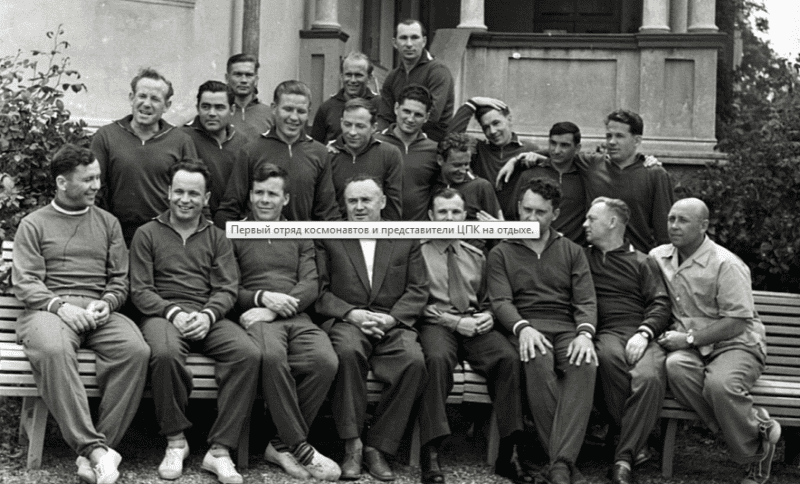
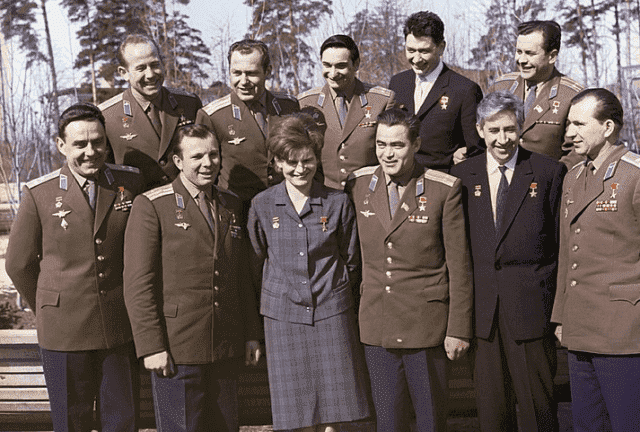
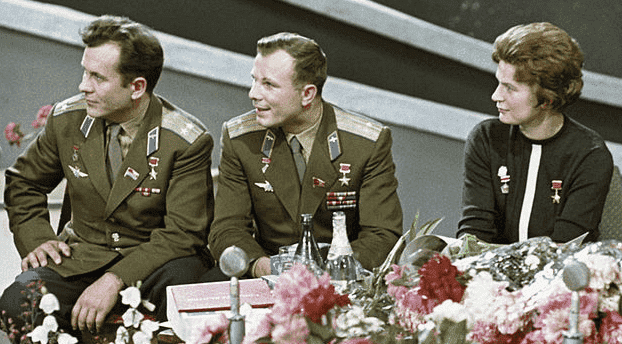
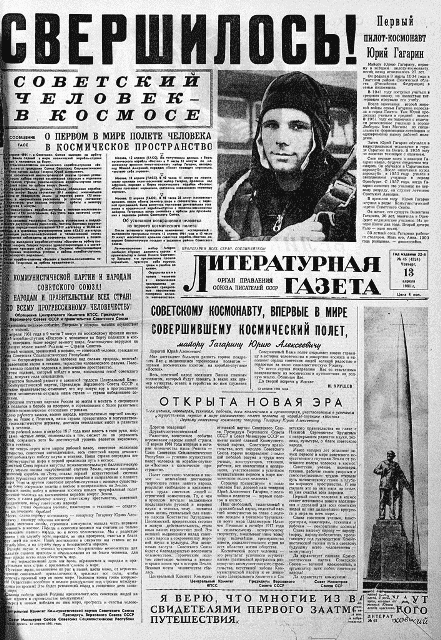
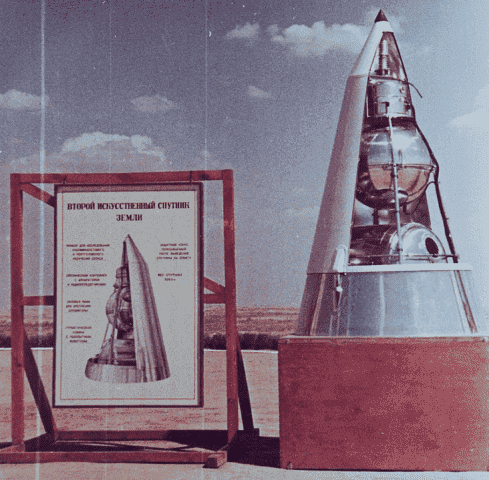
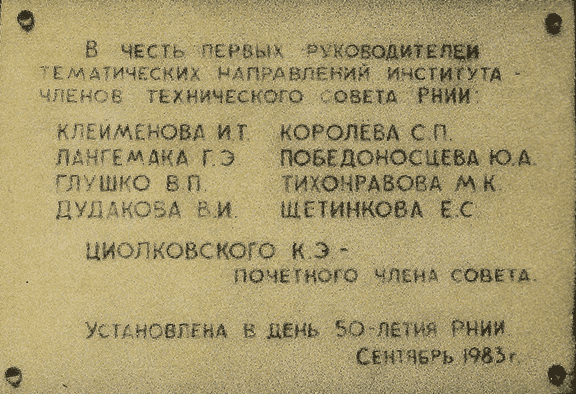
Authority and photos by
http://lib.ssau.ru/russian-aerospace-history
https://sgugit.ru/our-university/structural-subdivisions
http://www.astronet.ru/db/msg/1177040/chapter4_05.html
https://rosuchebnik.ru/material/kosmicheskaya-programma-sssr-ot-kolybeli-do-kontsa/







